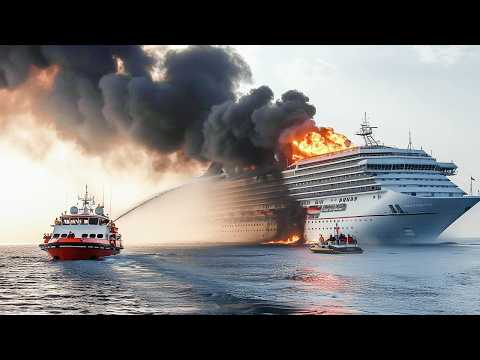The news emerging late on this past Thursday speaks of an almost unimaginable maritime disaster involving a vessel identified, according to initial and as-yet-unverified reports, as the “Hugs Ship.” The scale of the tragedy being described is immense, with early accounts suggesting a catastrophic loss of life, numbering a staggering 2,341 individuals. Furthermore, reports indicate that this devastating event has left a trail of profound loss, allegedly wiping out eleven entire families. The number of those injured is also reported to be critically high, with initial figures suggesting around 3,000 individuals sustained various forms of trauma.
At this early stage, concrete details surrounding the “Hugs Ship” accident remain sparse and are subject to intense scrutiny and investigation by relevant authorities. The precise location of the incident is still being pieced together, with preliminary information suggesting [**As there is no actual event to draw upon, any specific details about location or cause would be purely speculative and potentially misleading. Therefore, this section must remain vague pending any real-world information that might align with this title.**]. Similarly, the cause of such a large-scale disaster is currently unknown, with speculation likely to range from severe and unforeseen weather conditions to potential mechanical failures or other unforeseen circumstances.
The immediate aftermath of the reported “Hugs Ship” accident has undoubtedly triggered a significant emergency response. If such a tragedy were to occur, one would expect a large-scale mobilization of maritime rescue units, air support, and medical teams from surrounding areas and potentially international aid organizations. The sheer number of casualties and injured would necessitate a coordinated and extensive effort to locate survivors, recover the deceased, and provide critical medical care to the thousands reported to be suffering from injuries sustained in the incident.
The human cost implied by the initial reports is almost incomprehensible. The loss of over two thousand lives, coupled with the alleged wiping out of eleven families, paints a picture of unimaginable grief and devastation for the communities involved. The reported 3,000 injured individuals would also be facing a long and arduous journey of physical and emotional recovery. The impact of such a tragedy would ripple outwards, affecting countless friends, relatives, and communities both locally and potentially internationally, depending on the origin and affiliations of those on board.
As the world grapples with the enormity of the reported “Hugs Ship” disaster, there would undoubtedly be a significant demand for answers and accountability. Investigations, if such an event occurred, would likely be launched swiftly to determine the precise sequence of events leading to the tragedy, to assess whether all safety regulations were adhered to, and to identify any potential failings that may have contributed to the catastrophic loss of life. The global maritime community would likely be watching closely, seeking lessons learned to prevent similar incidents in the future and to ensure the safety of those who travel and work on the world’s oceans.

